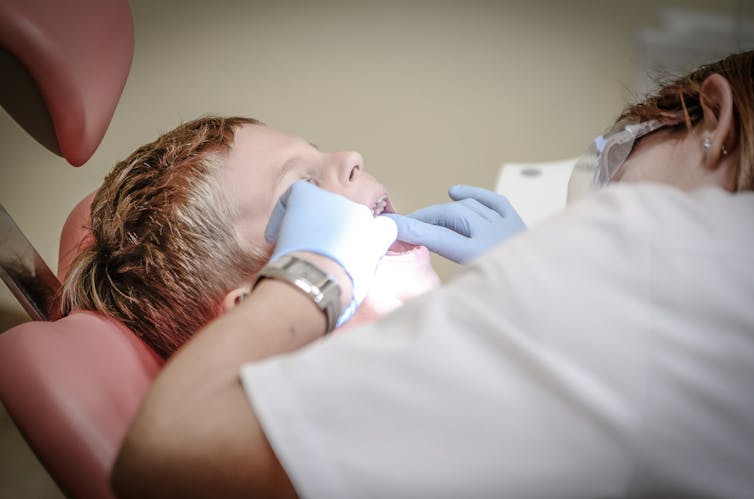Table of Contents
Canadians pleasure ourselves on our well being-care technique, in particular in comparison with our neighbours to the south. But there are substantial gaps in coverage. Practically one particular-third of Canadians do not have dental insurance plan, and that amount climbs to 50 for each cent for reduce-income Canadians. Without dental treatment, minor troubles like cavities can outcome in severe bacterial infections.
Around 10 for each cent of Canadians live with pain in their mouth. Folks pay a visit to unexpected emergency rooms for treatment that could be better delivered in a dental business. Canadians eliminate tooth that could have been saved, which helps make it really hard to consume nutritiously and can make it more tricky to discover do the job.
Inadequate oral overall health can also complicate or add to diabetic issues, heart disorder and other serious conditions.
Why was dental treatment not provided in medicare?
My forthcoming e book, The Smile Hole: The Historical past of Oral Overall health and Social Inequality, explores why dental care was remaining out of medicare. The 1964 Royal Fee on Overall health Products and services, which established the phase for medicare, recommended the institution of a dental treatment software for small children, utilizing dentists and dental pros with significantly less training named dental auxiliaries.
The strategy was to start with youthful children and then develop eligibility to more mature small children. Finally, adults could be bundled.

Author presented
At the time, there was a sizeable scarcity of dentists in Canada and a universal software was not practical. Dentists opposed the plan of publicly funded denticare, especially the use of auxiliaries to take care of children.
The plan of working with auxiliaries came from New Zealand, in which specially educated dental nurses furnished procedure in educational facilities. Irrespective of the achievements of the New Zealand method, dentists did not think that dental auxiliaries experienced enough training to operate without a dentist’s immediate supervision.
Dentists thought that a lot more emphasis should really be positioned on prevention, specially schooling and drinking water fluoridation. Lots of had been battling for water fluoridation in their communities for in excess of a 10 years. H2o fluoridation had been shown to significantly lower cavities and yet Canadians repeatedly rejected drinking water fluoridation in municipal referendums, top dentists to conclude that Canadians did not benefit their oral wellbeing.
When the Medical Treatment Act of 1966 handed, dental care was not integrated. For the most portion, dentists ended up delighted that they could keep on their methods with no point out interference.
The provinces phase in
My guide handles the historical past of dental systems in Canada. Even ahead of medicare, quite a handful of provinces offered public dental insurance plan for people today on social assistance.
The Ontario dental insurance coverage software, for case in point, was set up in 1958 to deliver care for small children whose mothers obtained state guidance. In 1965, all parents who been given loved ones gains turned suitable. Sadly, a lot of people who lived in locations devoid of a dentist had been not able to access the program.
According to a research by dental community well being researcher James Leake, dentists also experienced challenges with the system. They disliked it for the reason that it only incorporated primary companies and they found it professionally hard to not deliver the finest feasible company. Dentists also complained that men and women on social support have been significantly more probably to overlook appointments than other sufferers.

(Pixabay)
Access to treatment carries on to be a trouble right now. Though all provinces give some dental products and services to people today on social help, dentists are normally reimbursed at less than their common fees, generating them reluctant to provide these people.
Dental treatment for small children
In the many years after the Next World War, some provinces began delivering dental care to all children. The most ground breaking plan was in Saskatchewan, exactly where dental nurses — later named dental therapists — supplied treatment in faculties starting in the mid-1970s. The Higher education of Dental Surgeons opposed the system and it was cancelled in 1987.
In other provinces, small children acquired condition-funded treatment in private dental places of work. Despite the fact that there ended up substantial cutbacks to children’s applications in the late 20th century, Québec, Newfoundland and Labrador, Prince Edward Island and Nova Scotia still have universal dental treatment plans for children. In the past 15 several years, there has been an expansion of focused systems aimed at low-profits young children, this kind of as Ontario’s Balanced Smiles
Increase of non-public dental coverage

(Pixabay)
In the 1970s, unions started demanding dental insurance. Providers that no for a longer time desired to supply health-related gains to their staff members started to offer dental insurance policy. By 1982, close to two-thirds of collective agreements involved dental benefits and just over one particular-3rd of Canadians experienced private dental coverage. By the mid-90s, above half of all Canadians experienced personal dental insurance policies.
Even although dental coverage did not include all providers, access to insurance policy diminished the demand from customers for common dental insurance policies.
Gaps in treatment
This has remaining some Canadians devoid of dental treatment. In 2007, journalist Moira Welsh wrote about Jason Jones for the Toronto Star. Jones was a youthful man, but his enamel had rotted away. In extreme soreness, he expended his wife’s daily life savings to take away them.
At the time the article was revealed, Jones experienced just two tooth, which the dentists had left in as anchors for dentures. He could only eat gentle food items, his visual appeal was adversely afflicted and he could not come across a occupation.
Jones’ tale had a pleased ending. In reaction to the front-web page tale, many dentists and denturists arrived at out and dentist Raj Singh supplied him with a new smile. Unfortunately, many other Canadians are not so fortunate.
The foreseeable future of denticare
In 2011, the Canadian Centre for Plan Choices posted the report Placing Our Funds Where by Our Mouth Is, drawing focus to the will need for better dental care. In 2019, the NDP bundled denticare in its federal election platform. The Liberal govt promised to investigate universal dental treatment in its throne speech of December 2019, and in Oct 2020, the Parliamentary Finances Place of work costed a program to give dental care to all Canadians with a family profits of beneath $90,000, comparable to what the Non-Insured Overall health Gains program gives for Indigenous folks.
The NDP made denticare a key demand from customers in its 2021 electoral platform. Most not long ago, the Liberal federal government agreed to provide a denticare application, starting with small children under 12 and increasing it until every person with a residence revenue of underneath $90,000 is lined, with no co-payments for people with a spouse and children revenue of less than $70,000.
If the Liberals comply with by on their guarantee, this will cut down the gaps in treatment and minimize the struggling of quite a few Canadians.





More Stories
‘Unretiring’? This is how to handle your Medicare coverage
6 Hacks to Build More Sustainable Habits
Red cheeks – what can you do?